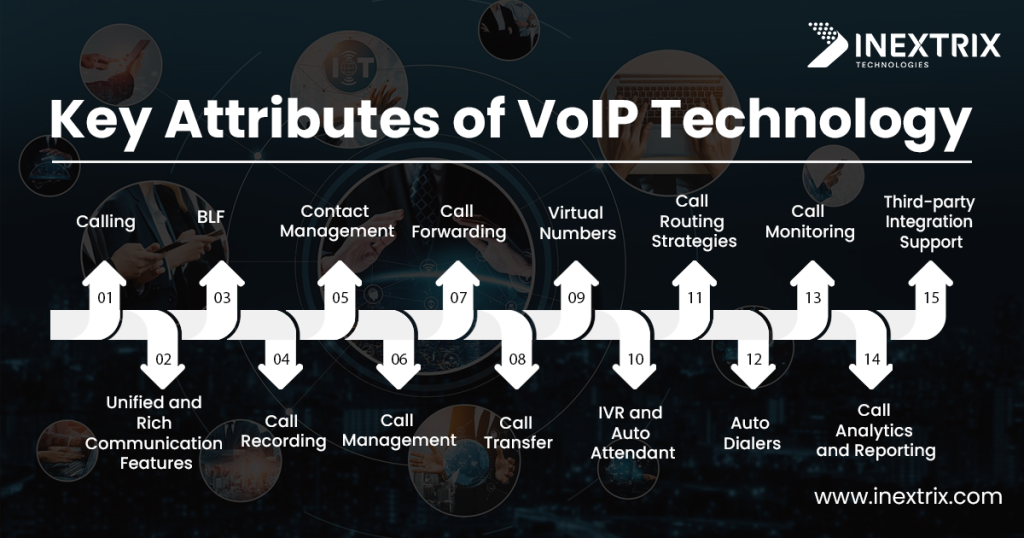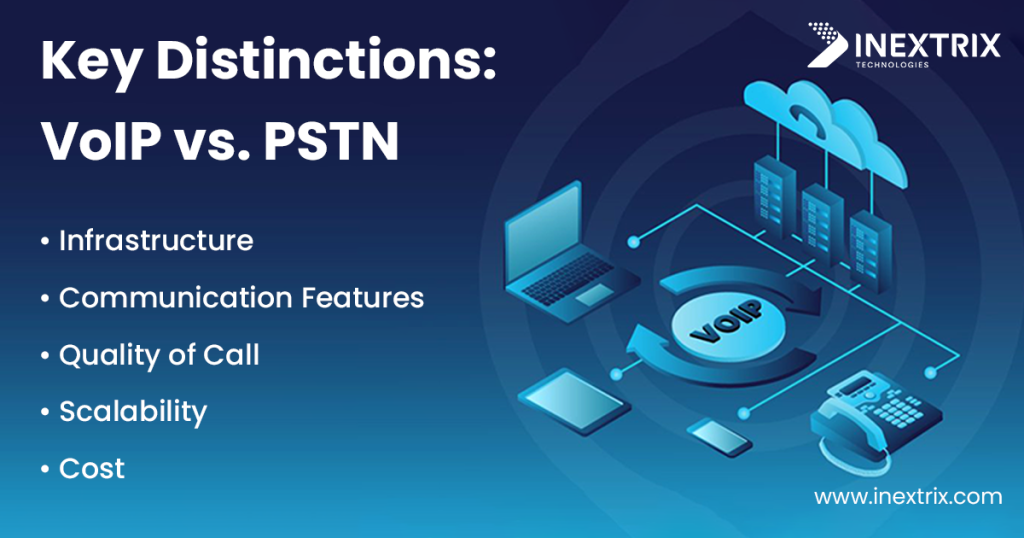VoIP has become part of routine lives. Everyone uses this technological boon. Certainly, this has given a boost to VoIP development companies to build more creative and tailored solutions. Interestingly, many people, including businesses, don’t know what VoIP actually is. This blog post is targeting those who have heard of VoIP or know a few things about it, but not all the information. At the end of this blog post, you will have in-depth knowledge of VoIP technology that is fulfilling your communication requirements.
So, without any further delay, let’s get started to discuss this interesting topic that has become an inseparable part of our routine lives. Remember, whether you are into business or any sort of profession or not, the use of VoIP based communication tools is inevitable. Thus, it is worth learning about this subject matter.
1. Defining VoIP
VoIP is an acronym for Voice over Internet Protocol. As the full form suggests, it flows voice over internet lines to make communication happen. Was that definition too simple to understand? Then here is another one. VoIP is a communication technology that uses your broadband internet connection to make and receive phone calls. Unlike your conventional telephony system, it is not dependent on a PRI wired system to offer you telecommunication features. Furthermore, innovations in the VoIP industry have now added unified communication channels to enable communication across different touchpoints such as messaging, SMS, fax, video calls, and more.
Elevate your Communication Infrastructure with our cutting-edge VoIP development services.
Undoubtedly, VoIP offers flexibility beyond traditional landline systems. Moreover, it empowers users to conduct two-way calls using different devices such as desktops, tablets, smartphones, IP phones, and more. Certainly, this versatile nature enhances accessibility and reach for businesses and individuals alike.
Key Components for VoIP
If you are learning only fundamentals, then this information might overwhelm you. However, if you are interested in learning custom VoIP development or building your own app, then you must know these components that make communication possible in the VoIP industry.
Codec: It converts analog signals into digital and vice versa. Majorly used codecs are G.711, G.729, G.723.1, G.726, G.722, Opus, and Speex.
VoIP gateways: It aids the process of establishing a connection between VoIP and non-VoIP devices to make VoIP to PRI (Traditional phone) calling possible.
IP network: Certainly, you can use a public or private internet network to make calls. This is necessary to transmit voice and data packets over internet lines. The public network is your internet network and the private represents an IP PBX connected to the internet.
2. How Does VoIP Work?
As discussed, VoIP uses the internet to provide you calling features. Therefore, it must transform your analog signals into digital signals and vice versa to make communication possible. Moreover, it needs the key components that we discussed in the earlier segment to set up your VoIP network that enables communication.
Interestingly, VoIP uses a packet switching technique unlike the traditional telephony system, which uses circuit switching. Simply put, it establishes a connection and exchanges or sends data packets only when it is required to make a call or any type of conversation. Conversely, it will not send any data.
Key steps that explain how VoIP based communication work are as follow:
- Once you initiate the call, the request is sent to your termination service provider or carrier to establish a connection.
- At your end, the VoIP solution or VoIP enabled device will convert your voice into digital signals and transmit it over internet lines. At the receiving end, the digital signals will reconvert into analog signals to make a normal call possible.
There are some technical terms involved such as using RTP (Real Time Protocol) to transmit voice and data packets in real time. Furthermore, this communication also includes the significant role of gateway, codecs, and more. However, you can skip those technicalities for now.
Traditionally, there were multiple types of hardware components involved in setting up a VoIP network. However, the world has moved towards digitization. Therefore, things are pretty simple, software-specific, and swift. Moreover, cheap internet access has made it possible for VoIP based communication at cheaper rates than ever before and that is also completely hassle-free.
3. Major Features of VoIP

VoIP development is enormous. There are endless opportunities to develop different communication tools, which will have diverse features. Therefore, it is quite difficult to define all features in this blog post. However, we can define majorly used or available communication features to give you hints on how rich a collaborative environment you can build with this solution. Please note, there are some VoIP solutions that will not have end to end communication features. For example, a class 4 Softswitch will not have end to end communication features because its main role is to provide call routing to support international calling.
Calling
- It supports one-to-one voice calling and video calling. Moreover, it also supports conference calling.
Unified and Rich Communication Features
- It supports instant messaging, faxing, texting, and similar communication channels for two-way interaction. Moreover, it supports file sharing, media sharing, and other features.
BLF
- It shows the status of the participant in the app. It means you can see online, offline, busy, and away status.
Call Recording
- You can record selected or all calls. This is a great feature for quality assurance. This feature also supports in-app recorded file playing and download recording options.
Contact Management
- You can manage contacts like a phone book in your smartphone.
Call Management
- You can get a range of call management features like call mute and un-mute, call park and pickup, etc.
Call Forwarding
- All incoming calls are forwarded to the predefined phone number.
Call Transfer
- It supports attended and blind call transfer that lets you connect the call to the right person.
Virtual Numbers
- VoIP lets you keep your personal number private as you use virtual numbers to make professional calls.
IVR and Auto Attendant
- It attends all incoming calls and plays an interactive voice response system that lets the caller retrieve information or take the required action.
Call Routing Strategies
- It supports different automatic call routing strategies to optimize the process of connecting the caller to the right representative.
Auto Dialers
- It lets you dial calls automatically to save time of agents from the tedious jobs of dialing.
Call Monitoring
- Different real time call monitoring features are available to let you monitor the efficacy of VoIP infrastructure and staff.
Call Analytics and Reporting
- Access insightful analytics and a range of reports that provide key performance indicators that help in evaluating present performance and making strategies to improve future performance.
Third-party Integration Support
- You can integrate any business tool with your VoIP solution to build a comprehensive platform.
There are several other powerful features such as callback scheduling, visual voicemail, click-to-call, etc. are available to augment your communication experience. However, it is necessary to remember that different solutions will have different ranges of features.
If you are interested in learning more advanced details about VoIP, then we recommend you to read our blog post: AI Augmenting the World of VoIP Application Development. As we all know, VoIP is one of the most popular technologies empowering all technology tools. Learn how it is influencing development of VoIP based solutions and its development process.
4. Major Difference Between VoIP and PSTN

There are multiple criteria to consider, which provide a clear difference between VoIP and PSTN for communication. Let’s take a look at the five major criteria:
Infrastructure
VoIP uses packet-switched mechanisms and internet lines to make and receive calls. Unlike conventional telephony, PSTN (Public Switched Telephone Network) uses copper wires and hardware switches to provide calling.
Communication Features
Undoubtedly, VoIP provides an exceptional range of communication features at much cheaper rates. Conversely, PSTN does not support some of the features. Ideally, PSTN provides fundamental communication features only. To use added features, you need to invest more in buying a hardware PBX system and managing it.
Quality of Call
Traditionally, PSTN used to provide better quality than VoIP calling. However, this is not the case anymore because we are living in the 5G era. Therefore, a high bandwidth internet connection is easily available, and it provides exceptional quality of call.
Scalability
VoIP solutions are way more scalable than PSTN networks. In fact, cloudification makes VoIP even more scalable. However, PSTN is still dependent on hardware systems. Therefore, it is not that scalable.
Cost
Unquestionably, VoIP based communication is extremely cheap even for international calling. However, PSTN based calling is expensive. Moreover, the cost of system management and maintenance is also cheaper with VoIP than PSTN.
5. Major Advantages of VoIP
Certainly, VoIP has several amazing benefits to offer, which is why it is popular among users compared to PSTN. Let’s discuss five major advantages.
Quick to start, move, and scale
Unlike a PSTN network, which is dependent on wires, hardware, and similar components, VoIP is completely software based in the modern era. Of course, you can still set up in-house server based infrastructure. However, even without that, you can use cloud computing to run your VoIP applications seamlessly. Therefore, it is quick to start using communication solutions based on VoIP.
Additionally, it provides complete mobility because of its software nature. This gives more flexibility to move your apps and users and keep them connected. Moreover, you can scale up easily and quickly.
Rich Features
With the right custom VoIP development expertise, the sky’s the limit. You can develop basic to intricate features, which are not possible to achieve with PSTN.
Highly Customizable
You can build a highly tailored telephony platform for your business. You can add all the features that you need. Moreover, you can integrate any third party solutions and apps to develop an all-inclusive communication platform.
Low Cost
Undoubtedly, VoIP based communication is way cheaper because of internet based calling. You can enjoy cheap international calling. Moreover, maintenance of the software is also extremely cheap and cost effective.
No Vendor Dependency
Unlike PSTN based communication, which is provided by authorized providers in your nation, VoIP has sufficient options to choose from. You can decide your vendors that provide you with software and communication services. Moreover, you can even switch to any other provider if you are unhappy with the existing vendor. This gives better pricing and greater flexibility.
6. Major Limitations of VoIP
Like any other technology, VoIP has certain limitations. Let’s quickly look at three major limitations of VoIP-based communication.
Highly Dependent on Internet
Even if we are living in the 5G era, there are some areas that are out of internet coverage. If you don’t have access to high bandwidth internet, then you are more likely to lose your benefits.
Lack of Emergency Number Support
All different countries will have some emergency numbers to let their citizens connect with the respective emergency department. However, VoIP does not support those emergency numbers. In fact, dialing an emergency number may connect you with internal team members.
Technicalities Involved
Generally, VoIP based communication tools are extremely easy to use and you don’t need any technical expertise. However, to set up the solution and manage it, you will need some experience or knowledge. Conversely, it is not the major roadblock because service providers offer this service as part of their support contract.
Concluding Note
In conclusion, VoIP is outstanding in terms of its advantages compared to PSTN. Moreover, easy and affordable access to the internet and other infrastructure components make VoIP based communication tools more adaptive. Furthermore, the right development team can tailor the VoIP telephony solution to meet your custom needs. In short, there are several advantages of using VoIP based communication tools.
If you are a tech-savvy company or someone who likes to stay up with technology, VoIP is for you. Certainly, you can get everything you want in your communication with VoIP. Like any other technology, it also has challenges or roadblocks. However, innovative companies are easily overcoming these challenges.
If you are in the quest of building your tailored VoIP solution, we can help you with our custom services. To learn more about our VoIP development and how we can help you, contact us.


